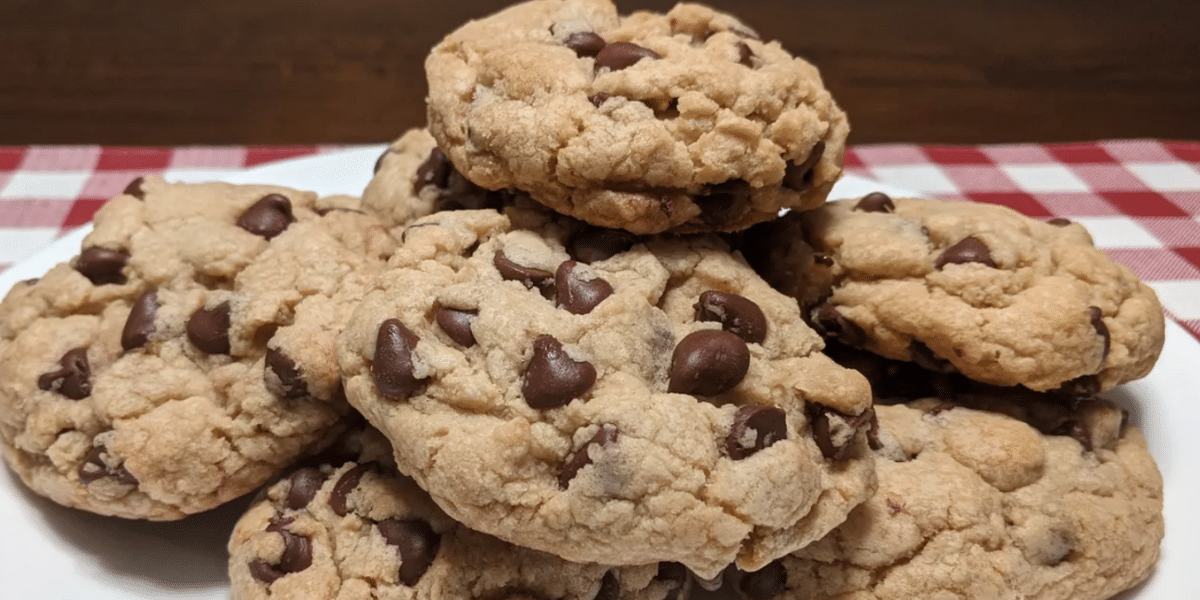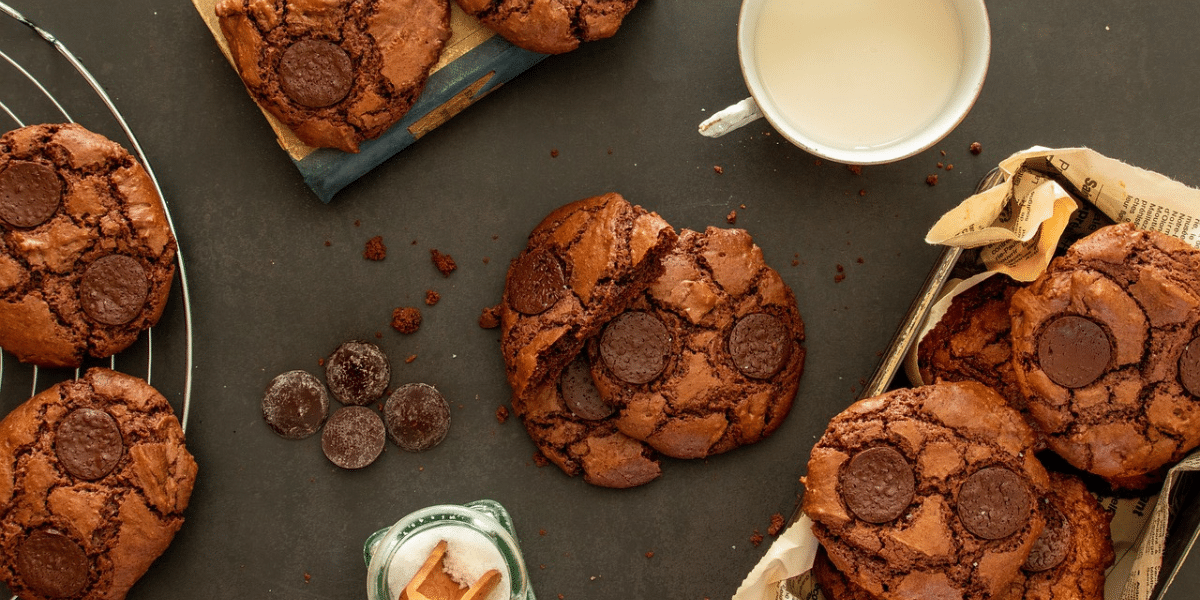Introduction
Discover the secrets to a good cookie with this comprehensive guide, designed to help you achieve bakery-quality results at home. Baking the perfect cookie is an art form, filled with nuances and subtleties that every baker needs to master. In this journey, understanding the secrets behind cookie baking is key to success. For a broader perspective on baking, you might want to check out BBC Good Food’s Ultimate Guide to Biscuits which offers additional tips and recipes.
The Role of Ingredients in Secrets to a Good Cookie
Flour: The Foundation of Cookie Texture
Flour serves as the backbone of cookie texture, determining whether your cookies turn out soft, chewy, or crispy. The type of flour used, such as all-purpose, bread flour, or cake flour, affects the cookie’s structure and density. All-purpose flour is the most common choice, providing a balance of protein and starch for a versatile texture. However, experimenting with different types of flour can yield unique results, allowing you to customize your cookies to your preference. Additionally, the method of measuring flour, whether by weight or volume, can significantly impact the consistency and texture of the final product.
Sugar: Sweetness and Texture Enhancement
Sugar plays a crucial role in the taste, texture, and appearance of cookies. It contributes sweetness, aids in browning, and enhances texture by creating a tender crumb. The type and quantity of sugar used influence the cookie’s flavor profile and texture. While white granulated sugar provides sweetness and structure, brown sugar adds moisture, chewiness, and a hint of caramel flavor. Powdered sugar is often used in delicate, tender cookies, while alternative sweeteners like honey or maple syrup can impart distinct flavors and textures.
Fat: Creating Moisture and Flavor
Fat is a fundamental ingredient in cookies, responsible for moisture retention, texture, and flavor development. Butter, margarine, shortening, or oils are commonly used fats in cookie recipes, each contributing unique qualities to the final product. Butter adds rich flavor and a tender crumb, while shortening produces cookies with a softer texture and better structure. Oils, such as vegetable or coconut oil, create cookies that are moist and chewy. The temperature and consistency of the fat during mixing and baking also impact cookie spread, texture, and overall mouthfeel.
Flavorings and Additions: Elevating Taste and Texture
Flavorings and additions play a pivotal role in enhancing the taste and texture of cookies. Vanilla extract, almond extract, spices like cinnamon or nutmeg, and citrus zest are commonly used flavorings that add depth and complexity to cookies. Additionally, chocolate chips, nuts, dried fruits, and candies are popular add-ins that provide bursts of flavor, texture, and visual appeal. Experimenting with different flavor combinations and textures allows you to create cookies that are unique and delicious, satisfying a variety of taste preferences and dietary restrictions.
Choosing the Right Sugar for a Good Cookie
Sugar is essential for both the texture and flavor of your cookies. While white sugar is commonly used in recipes, you might be curious about substituting brown sugar in chocolate chip cookies. Brown sugar can introduce a chewy texture and a delightful caramel flavor to your treats. However, it’s crucial to grasp how this substitution could alter the end result.
In instances where you find yourself without brown sugar, our article exploring the effects of forgetting brown sugar in cookies can be incredibly helpful. Delve into our detailed resources to understand the nuances of sugar substitution and ensure your baking endeavors yield delicious results every time.
In the realm of cookie baking, sugar is a pivotal ingredient. It not only adds sweetness but also affects the texture and spread of the cookie. Many bakers swear by the use of brown sugar for a chewier and more flavorful result. If you’re looking to dive deeper into this topic, our guide on substituting brown sugar for white sugar in chocolate chip cookies provides a comprehensive look at how this substitution can elevate your cookie game.
The Importance of Brown Sugar in Achieving a Good Cookie

Brown sugar is a prevalent ingredient in cookie recipes. Ever pondered how brown sugar impacts chocolate chip cookies? Or questioned whether it’s essential for baking cookies? Our detailed guides offer insights into these queries, equipping you with the necessary knowledge for your baking endeavors. Delve into our comprehensive resources to uncover the role of brown sugar in cookie recipes and explore its necessity in your baking repertoire. With these valuable insights, you’ll be well-prepared to embark on your baking adventures with confidence and expertise.
Brown sugar is often hailed as the secret weapon for chewy and delicious cookies. Its molasses content adds moisture and a unique flavor that white sugar cannot replicate. To understand the science behind this, check out our article on how brown sugar affects chocolate chip cookies. Additionally, if you’re curious about the necessity of brown sugar in your recipe, our piece on is brown sugar necessary for baking cookies sheds light on this topic.
Baking Techniques: Unveiling the Secrets to a Good Cookie
Achieving the Perfect Texture in Your Cookies
The texture of your cookies holds significant importance, catering to preferences for soft, chewy, or crispy treats. Our article delves into the intricacies of chocolate chip cookies’ texture, exploring what factors contribute to hardness or softness. Discover the secrets behind achieving your desired cookie texture by exploring our comprehensive guide. With valuable insights and tips provided, you’ll gain the knowledge needed to bake chocolate chip cookies that perfectly match your texture preferences. Dive into our article to unlock the mysteries of cookie texture and elevate your baking game to new heights.
Texture is a critical aspect of a good cookie. Whether you’re aiming for a soft, chewy, or crispy bite, understanding the factors that contribute to texture is vital. For an in-depth exploration of this topic, our guide on chocolate chip cookies’ texture offers valuable insights and tips.
Solving Common Baking Issues: Secrets to a Perfect Cookie
Have you experienced disappointment when your cookies spread too much or end up flat? Our guide explores why Nestle chocolate chip cookies go flat and how to achieve fluffy chocolate chip cookies instead. By troubleshooting these common baking issues, you’ll ensure your cookies turn out perfect every time. Dive into our guide to understand why your cookies may flatten and discover the secrets to achieving fluffy, irresistible treats. With these insights, you’ll be equipped to overcome baking challenges and enjoy perfectly baked cookies with every batch.
No baker is immune to the occasional cookie mishap. If you’ve ever faced the dilemma of cookies spreading too thin or puffing up too much, you’re not alone. Our articles on why Nestle chocolate chip cookies go flat and why your chocolate chip cookies are fluffy and not flat are excellent resources to help you troubleshoot and perfect your baking technique.
FAQs :
- What is the secret to a good cookie?
- The secret to a good cookie lies in achieving the perfect balance of ingredients, including flour, sugar, fat, leavening agents, and flavorings. Ensuring precise measurements and using high-quality ingredients contribute to the cookie’s taste, texture, and overall quality.
- How do I ensure my cookies have the right texture?
- Achieving the desired texture in cookies involves several factors. The ratio of ingredients, such as flour, sugar, and fat, plays a crucial role. Additionally, factors like the baking temperature and duration influence whether cookies turn out soft, chewy, or crispy. Experimenting with different recipes and techniques can help you find the perfect texture for your cookies.
- Why do my cookies spread too much during baking?
- Cookies may spread excessively during baking due to various reasons, such as using too much butter or sugar, not chilling the dough adequately before baking, or baking on a hot baking sheet. To prevent excessive spreading, ensure precise measurements of ingredients, chill the dough as needed, and bake cookies on cool, parchment-lined baking sheets.
- How can I make my cookies more flavorful?
- Enhancing the flavor of cookies involves incorporating ingredients like vanilla extract, spices, citrus zest, and high-quality chocolate or nuts. Experimenting with different flavor combinations and using fresh, aromatic ingredients can elevate the taste of your cookies and make them more enjoyable.
- What are some common mistakes to avoid when baking cookies?
- Common mistakes to avoid when baking cookies include overmixing the dough, using expired ingredients, not preheating the oven properly, and overcrowding the baking sheet. Additionally, not following the recipe instructions precisely or skipping crucial steps like chilling the dough can lead to undesirable results. Paying attention to these details can help you avoid common pitfalls and achieve better cookie outcomes.
Conclusion:
Baking the perfect cookie is a delightful journey filled with discoveries. Understanding the secrets behind this process is essential for success. By carefully selecting your ingredients, practicing baking techniques, and learning how to troubleshoot common issues, you’ll pave the way for baking cookies that will surely impress. Pay attention to the ingredients you use, practice baking techniques diligently, and equip yourself with the knowledge to overcome any challenges that may arise. With dedication and a willingness to learn, you’ll soon become a master of cookie baking, delighting yourself and others with each delicious batch.

